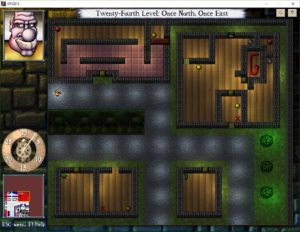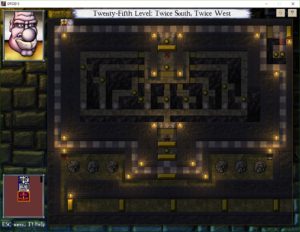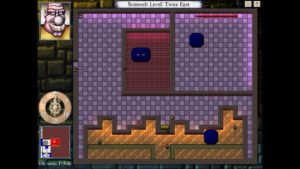The Floor is Jelly
OK, this year’s Steam winter sale has been going on for nearly a week, so I think it’s time I posted some words about a few of the games I got for cheap.
The Floor is Jelly is one of those little indie puzzle-platformers with novel mechanics, a genre not invented by Braid but definitely encouraged by it. The novelty is exactly what it sounds like: the floors (and, indeed, all the platform surfaces) wobble and deform as you jump on or into them. Thus, you can make larger jumps by treating the floor like a trampoline. It’s a pretty fun physical system to interact with — it reminds me a bit of Gish, except far easier to deal with, possibly because putting the deformation into the environment instead of the player character makes it more comprehensible, easier to see exactly what’s going on.
Nonetheless, it doesn’t take long to become comfortable with moving around in this world, and once you’ve done that, it kind of fades into the background for most of the game. The experience is mostly just that of artistically-stylized platformer, with themed sequences of levels arranged hub-and-spoke, each sequence exploring a new mechanic. For example, one sequence is set around an ocean, with water that bears you upward, effectively inverting gravity whenever you’re under the surface. This at least has some connection to the physics model, in that bypassing underwater obstacles can require jumping high to get enough downward momentum. But then there’s stuff like the sequence about buttons that rotate individual platforms 90 degrees. You can make interesting puzzles out of that, and the designer does. But what does it have to do with the floor being jelly?
Towards the end, though, it manages to forefront the jelly again. It does this by mixing things up. The first variant is the subtlest: a sequence of space-themed levels in lower gravity, introducing the notion that physical constants can change. It’s also in this sequence that the game starts to simulate glitching out, putting deadly pockets of screen garbage in your path. This sets up the final gauntlet, where all pretense of representationalism is dropped, and every few rooms, the world glitches out and changes the parameters of physics. At one point the floors stop bouncing back, so that every jump leaves a permanent dent. At another point, the jiggles start amplifying instead of tapering off, so that you have to keep running to outpace the terrifying instability created by your own passage. Each variation is basically an illustration of how the simulation can go wrong. For the player, they’re exercises in coping with wrong worlds. Until the very last variation, which ties the whole thing up in a satisfying manner by simply giving us a world where the floor isn’t jelly. It’s a return to normality, but moreso: the normality you return to is more normal than where you started.
I feel like I’d like the game better if it were more about the physics experiments and less about standard puzzle-platformer stuff where the floor just happens to be jelly. But I suppose there’s only so much you can do with a severely broken world.
 Comments(0)
Comments(0)

